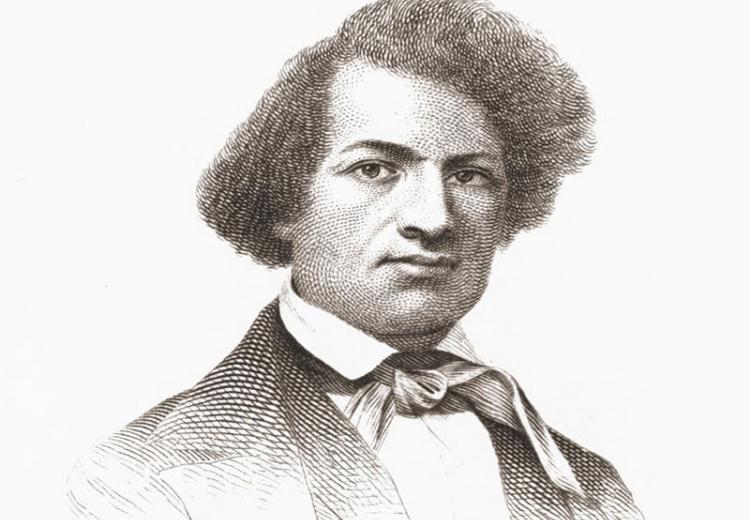Frederick Douglass’s Narrative: Myth of the Happy Slave

Frontispiece of original edition of Narrative of the Life of Frederick Douglass, 1845.
In 1845 the Narrative of the Life of Frederick Douglass, an American Slave, and Written by Himself was published. In it, Douglass criticizes directly—often with withering irony—those who defend slavery and those who prefer a romanticized version of it. Pitilessly, he offers the reader a first-hand account of the pain, humiliation, and brutality of the South's "peculiar institution.”
One myth that Southern slave owners and proponents perpetuated was that of the slave happily singing from dawn to dusk as he or she worked in the fields, prepared meals in the kitchen, or maintained the upkeep of the plantation. In his Narrative—particularly chapters 1 and 2— Douglass quickly distinguishes the myth from the reality. He uses incidents of cruelty that he witnessed along with songs of the slaves themselves—spirituals—to emphasize this distinction.
In this lesson, students analyze Douglass's first-hand account to see how he successfully contrasts myths with the reality of life under slavery.
Note: Students are expected to have some knowledge of slavery in U.S. history in the pre- Civil War period.
Guiding Questions
How does Frederick Douglass's skilled use of rhetoric craft a narrative that is also a compelling argument against slavery?
According to Douglass, what were some common misconceptions or myths about slaves and their situation?
Learning Objectives
Explain the use and effectiveness of precise word choice, imagery, irony, and rhetorical appeals in a persuasive text that deliberately contrasts reality with myth.
Explain Douglass’s exploration of the multiple meanings behind slave spirituals as a way of understanding slave life.
